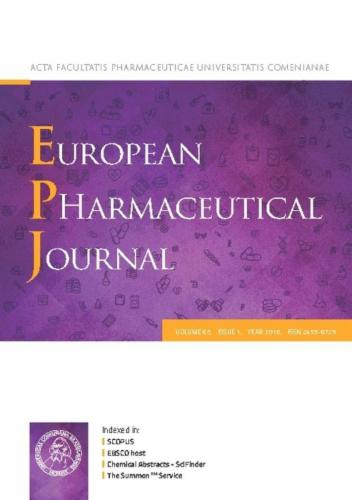通过优化生产工艺,提高左旋多巴-苯塞拉肼固定剂量联合片的稳定性
IF 4.7
3区 医学
Q1 PHARMACOLOGY & PHARMACY
引用次数: 0
摘要
帕金森病是一种使人衰弱的神经退行性疾病,主要特征是多巴胺缺乏,严重损害运动功能和生活质量。由于左旋多巴在补充多巴胺水平方面的有效性,它仍然是黄金标准治疗方法。然而,它与脱羧酶抑制剂如苯塞拉肼联合使用是提高生物利用度和减少周围副作用所必需的。尽管有这种优势,但苯塞拉肼在不断变化的环境条件下固有的不稳定性对制定有效和持久的固定剂量组合提出了重大挑战。本研究的目的是通过分离配制左旋多巴和苯塞拉齐的颗粒来制备稳定的固定剂量片剂,以防止其降解,这是现有文献中尚未探索的方法。通过将这些活性成分分别造粒,该配方利用了两种技术的稳定性和工艺优势,同时解决了与它们直接相互作用相关的降解风险。左旋多巴的湿制粒保证了均匀性和最佳的粉末压缩性,而苯塞拉肼的干制粒则避免了水分引起的不稳定性。在加速和长期条件下广泛的稳定性研究已经证明了这种双重造粒策略的优越性。这些发现表明,分离肉芽可提高左旋多巴-苯塞拉肼制剂的稳定性和疗效,为帕金森病的长期治疗提供了一种有希望的策略,并解决了当前药物研究的关键空白。该配方在一段时间内表现出一致的活性成分含量,最大限度地减少杂质形成,并表现出稳定的物理化学性质,远远超过传统的单一造粒方法。本文章由计算机程序翻译,如有差异,请以英文原文为准。

Enhanced stability of levodopa and benserazide fixed-dose combination tablets through optimized production processes
Parkinson's disease is a debilitating neurodegenerative disorder that is primarily characterized by dopamine deficiency, which significantly impairs motor function and quality of life. Levodopa remains the gold standard treatment due to its efficacy in replenishing dopamine levels. However, its combination with decarboxylase inhibitors such as benserazide is necessary to increase bioavailability and reduce peripheral side effects. Despite this advantage, the inherent instability of benserazide under changing environmental conditions presents a significant challenge in formulating effective and long-lasting fixed-dose combinations. The objective of this study is to develop a stable fixed-dose tablet composition of levodopa and benserazide by formulating their granules separately to prevent degradation, an approach underexplored in existing literature. By granulating these active ingredients separately, the formulation exploits the stability and process advantages of both techniques while addressing the risks of degradation associated with their direct interaction. The wet granulation of levodopa ensures homogeneity and optimized powder compressibility, while the dry granulation of benserazide avoids moisture-induced instability. Extensive stability studies under accelerated and long-term conditions have demonstrated the superiority of this dual granulation strategy. These findings suggest that separate granulation improves the stability and efficacy of levodopa-benserazide formulations, offering a promising strategy for the long-term management of Parkinson’s disease and addressing a critical gap in current pharmaceutical research. The formulation demonstrated consistent active ingredient content over time, minimized impurity formation, and exhibited stable physicochemical properties, going far beyond conventional single granulation methods.
求助全文
通过发布文献求助,成功后即可免费获取论文全文。
去求助
来源期刊
CiteScore
9.60
自引率
2.20%
发文量
248
审稿时长
50 days
期刊介绍:
The journal publishes research articles, review articles and scientific commentaries on all aspects of the pharmaceutical sciences with emphasis on conceptual novelty and scientific quality. The Editors welcome articles in this multidisciplinary field, with a focus on topics relevant for drug discovery and development.
More specifically, the Journal publishes reports on medicinal chemistry, pharmacology, drug absorption and metabolism, pharmacokinetics and pharmacodynamics, pharmaceutical and biomedical analysis, drug delivery (including gene delivery), drug targeting, pharmaceutical technology, pharmaceutical biotechnology and clinical drug evaluation. The journal will typically not give priority to manuscripts focusing primarily on organic synthesis, natural products, adaptation of analytical approaches, or discussions pertaining to drug policy making.
Scientific commentaries and review articles are generally by invitation only or by consent of the Editors. Proceedings of scientific meetings may be published as special issues or supplements to the Journal.

 求助内容:
求助内容: 应助结果提醒方式:
应助结果提醒方式:


